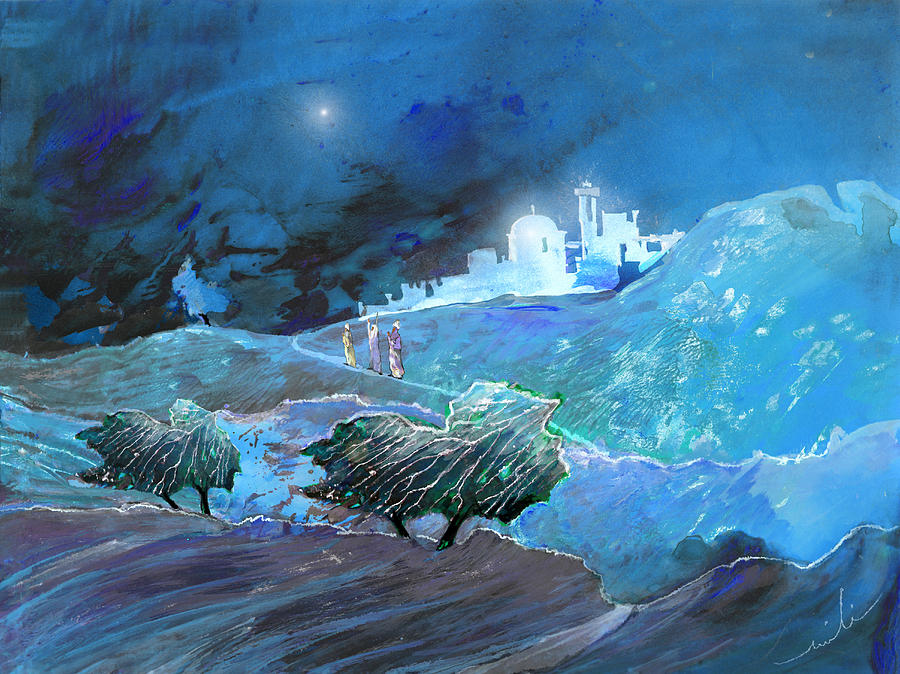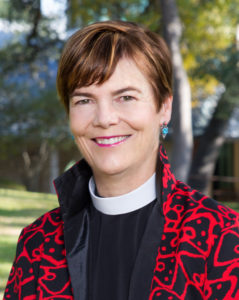The Sacred and the Profane, by Mircea Eliade, was the first book assigned in Religion 101, my first course at Williams College. I remember that in the opening chapters, Eliade writes about New Year rituals, celebrated by “religious man,” in which the cosmos was recreated and time began again.
“Since the New Year is a re-actualization of the cosmogony, it implies starting time over again at its beginning, that is, restoration of the primordial time, the “pure” time, that existed at the moment of Creation.” (77–78)
I recall the thrill of recognition I felt when reading Eliade. With my passionate imagination, even in the plain liturgy of The Episcopal Church, I had known the experience of “pure” time.
The description in The Sacred and Profane of beginning time again gives insight into the simultaneous celebration of the New Year in January – with all its retrospectives of the year past, predictions about the year to come, personal resolutions, and new commitments – and the Christian season of Epiphany.
Jesus’ birth, his human beginning celebrated at Christmas, blossoms outward in a series of “beginnings” episodes: the arrival of the magi, the baptism, the wedding at Cana, Jesus’ preaching in Nazareth. Each event displays the incarnation of Christ to others: to the Gentiles, to the crowds at the baptism, to the hometown people in Nazareth, to the guests at the wedding.
Images of Epiphany are those of light, making visible – “We have seen his star in the east” – and of speech, making audible – “And a voice came from heaven, saying, You are my Son, the Beloved; with you I am well pleased.” They are images of unfolding and unwrapping – “Then, opening their treasure chests, they offered him gifts of gold, frankincense, and myrrh” – and of unrolling the scroll of the prophet Isaiah. In these weeks we enjoy, savor, and appreciate the experience of Christmas with all our senses.
In the life of the community at Seminary of the Southwest, the new year, the season of Epiphany, begins the spring semester. Academic life resumes with a second beginning after the first beginning of matriculation in the fall. Faculty, staff, and students take a breath, re-gather, and get a second wind for the final lap toward graduation in May. In the ecclesial season, many of our graduates from May of 2018 are being ordained as priests in the bright light of the Epiphany.
As my sabbatical comes to a close, I am beginning again this January 2019. You could call it “re-entry.” I think of it as “re-beginning.”
Starting in August, I enjoyed a time away, a long retreat, a Sabbath. I changed location, activity, even identity. I put down all the tasks of my role as dean and president so I could spend time doing more exploring, walking, swimming, reading, writing, pondering scripture, making art, and praying in new ways. I spent one long stretch on the eastern coast of Canada and another in London with my husband, Frank. I connected with colleagues in Boston, New York, Los Angeles, and Big Bend National Park.
So now I’m beginning again. And it won’t be exactly the same. I will have forgotten some old things and remembered some new ones. Or forgotten some new and remembered some old. I will see with new eyes. Refreshed and recreated, I will see the familiar landscape with new eyes. I think the second book I read in Religion 101 was Shunryu Suzuki’s Zen Mind, Beginner’s Mind. That’s how I hope to come back, with a beginner’s mind.
I’m happy to be back with the people and the place that I know and love well. I look forward to connecting with the students in the first-year class, the new faculty and staff, and new board members. I am very grateful to everyone who made it possible for me go on sabbatical and to begin again, especially to the Board and to Scott, Fred, Dan, and Lesley. I am excited to return to the holy work of leading this seminary, so that it can prosper as an instrument of God’s wisdom, peace, and healing in the world.
I’ve been pondering a lot about how the gospels begin, especially the gospels of Mark and John. One of the traditional readings for Epiphany is the wedding at Cana in John 2:1–11. The Evangelist says it’s a beginning by naming it “the first of his signs.” The sign at Cana in Galilee is Jesus’ inaugural act. In most dramatic plots, the wedding is the climax. But in the gospel of John, the fulfillment is right there already at the beginning, in the marriage, a time of consummation, and in the plentiful wine flowing free and sweet. The sign at Cana is story of creation, of joy, and of life. Jesus’ glory is revealed, made available to the senses like good wine is tasted on the tongue and with the breath.
May we, as did those who danced and feasted at Cana, enjoy this month of January, this Epiphany, this “pure” time at Creation. Happy New Year!
How are you beginning again as an individual, as a community?
What are you uncovering, unwrapping, revealing? What are you making visible, audible, sensible?
What will you discover? What will you learn? With your beginner’s mind?



